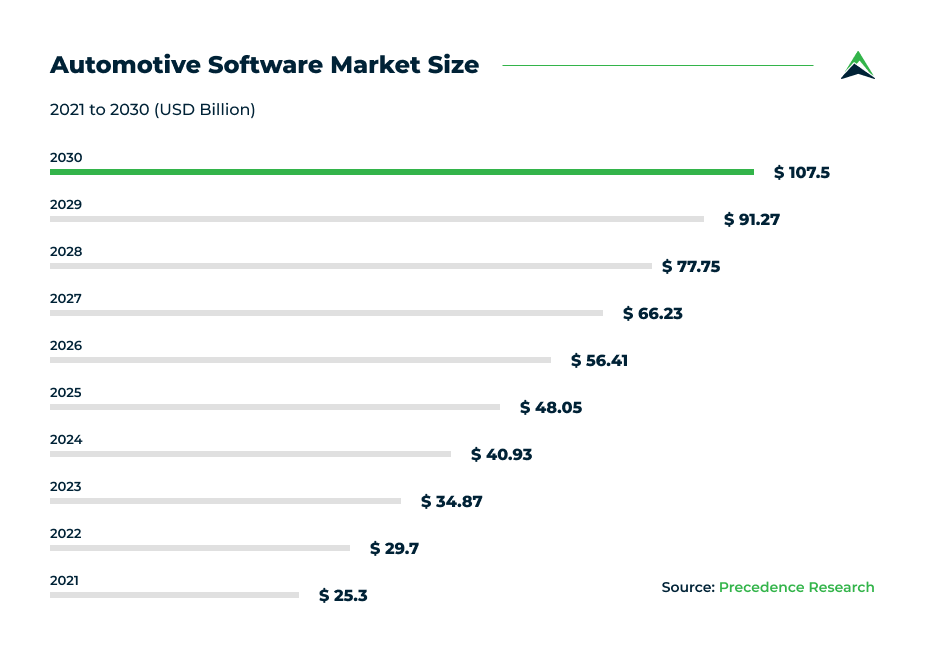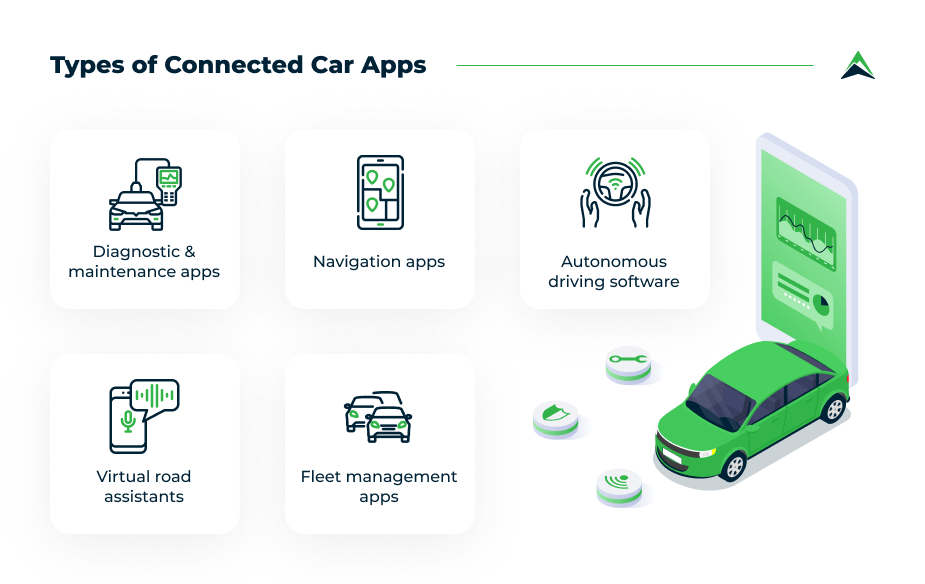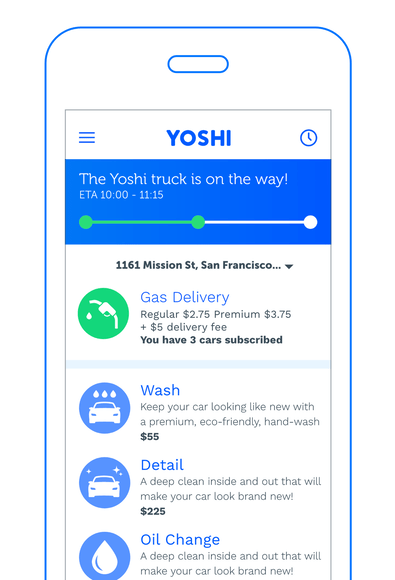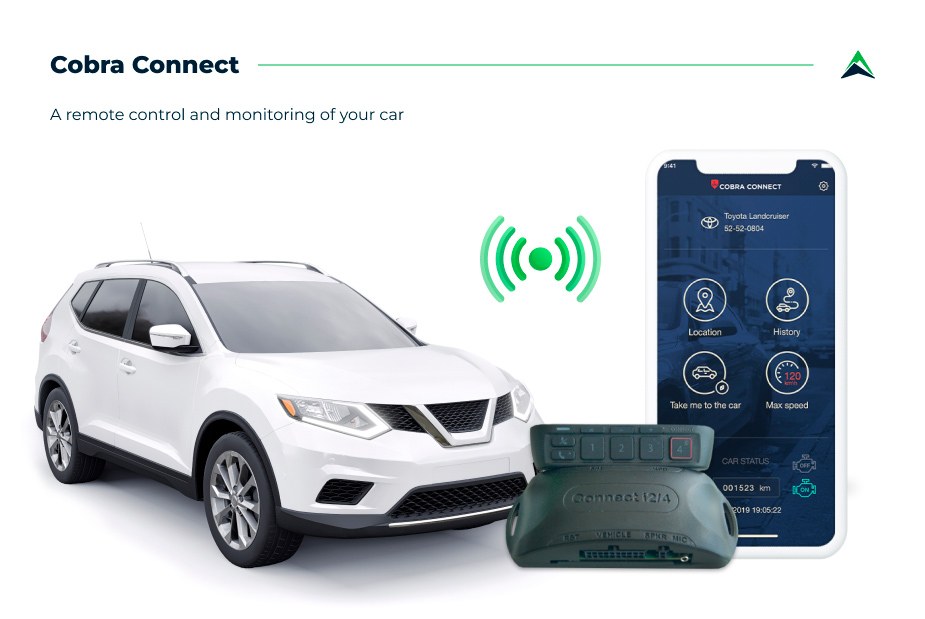Cars have long stopped being simple means of transportation. They carry a much deeper meaning to their owners, being valuable possessions, safe transit, and, sometimes, means to make a living. However, recently, the automotive industry has reached a new era. Technological advances have transformed the automobile industry, changing clients’ expectations and needs for a vehicle.
Car app development helps the automotive industry manage the growing needs of the modern market. The possibilities of automotive software development are practically limitless, giving way to new inventions and ideas each year.
Overall, the automotive software industry has achieved significant technological progress over recent years. Plus, as a relatively new niche, the industry presents great opportunities to stand out, and compete in a forming market.
That’s why now is a perfect time to learn more about the rising industry. See the most popular automotive apps on the market at the moment, and how you can use those trends to engineer the new best car app for drivers and businesses.
Automotive apps market overview
Software for the automotive industry has been on the rise these past several years, and it is only the beginning. Today, car owners expect their cars to be connected and informed about any road situations or inside operations.
Of course, such expectations are satisfied by various types of software designed specifically for the automobile business. Thus, it has birthed a new automotive app market. The given industry aims at enhancing drivers’ experience by providing fast, technological solutions to any situation they may come across on or off the road.
Overall, the automotive applications market was evaluated at $25.3 billion in 2021 and this number continues to grow with unprecedented speed. Yet, the industry is expected to grow at a 17.4% rate between 2022 to 2030, promising to reach $107.15 billion in seven years.

Car app ideas for the automotive industry
Tech progress has revolutionized the automotive industry. Modern buyers understand the value of technology in their driving experience. A single automotive app can completely change one’s driving experience and car perception.
Now, drivers rely on various software to maintain their cars, analyze road situations, learn about the chosen route, find necessary locations, run vehicle diagnostics, and so much more.
All these changes are possible due to collaboration between the automotive and software industries. Present automotive software solutions can make driving safer, more convenient, and highly enjoyable.
Here are the biggest trends in mobile apps for the automotive industry.
1. Connected car apps
Connected cars are one of the biggest trends in automotive software development. This technology operates by the constant exchange of data with other cars, cloud platforms, or other applications, and enhances drivers’ knowledge and awareness about optimal navigation routes, road situations, car maintenance, and much more.
See the top five examples of how manufacturers apply connected car apps in modern vehicles:
On-board diagnostic and maintenance apps
A driver receives notifications about the car’s condition, any threats to its operation, or malfunctions. Such automotive diagnostics software can prevent serious breakdowns, reduce shop costs, and ensure drivers’ safety.
Example: GoFar.
Navigation apps
Smart routing is the future of navigation apps. Drivers can see all necessary information about their routes, including the fastest option, road obstacles, like repairs or potholes, available parking spaces, etc.
Autonomous driving software
Self-driving cars can analyze the environment and adjust routes according to their perception of the surrounding. Such cars don’t require drivers’ intervention, though they still require a human presence.
Virtual road assistants
Drivers can manage a number of car operations and special features using voice control technology, meaning talking to virtual assistants. Such assistants can give directions, set routes, provide recommendations, find parking spots, manage multimedia, etc.
Example: Treesat.
Fleet management apps
Corporations can track, control, and maintain their vehicle fleet via management software. It creates a centralized system, which provides all data on each vehicle in the fleet, including their locations, speed, status, fuel levels, etc.
Example: Zubie.

2. Car parking solutions
Urban parking has long been an issue. Parking apps for cars can reduce the pressure of finding a free spot along the way. Such an app can provide necessary information on parking lot locations, and their availability while setting a route to the closest empty spots.
Such applications can also be personalized based on customers’ needs, special requirements, or common routes. The parking apps will also reduce the chances of parking violations, reduce traffic congestion, and enhance city parking space management.
Examples: JustPark.
3. On-demand fuel delivery apps
The automotive software development services have really reached a new high with this type of application. Now drivers can order fuel delivery from mobile fuel-filling stations. A driver only needs to state their location, choose the product they need, and wait for the station to arrive. Thus, drivers don’t have to look for gas stations along the way, wait in lines, or fear running out of gas before refilling.
In fact, car owners don’t have to be present during a refill at all. They can order a refill from anywhere, and the mobile station will send a notification about the successful transaction once done. Users can also purchase a subscription to such refills to arrange regular refills.

4. Car sharing apps
Car sharing services are on the rise at the moment. People strive to be more eco-conscious, while also saving money on gas bills or car ownership/maintenance. A car sharing app connects people who need a ride with car owners who offer their cars for rent. Thus, a user can open an app to find a car for rent nearby, drive it for a certain period, park it in designated areas, finish the rental deal, and move on with their day.
These applications allow simple and fast peer-to-peer transactions. They work on a short-term basis, and require no planning or scheduling, unlike traditional renting services. These apps are perfect for single-car use in large cities.
Examples: Zipcar, Turo, GIG Car Share.
5. Ride sharing
Speaking of eco-consciousness, car sharing is another way to reduce the environmental footprint and cut car expenses. Such applications work in a variety of ways with a single premise of renting a car for users’ purposes. Thus, a driver can carpool – drive their regular route with other app users to share the costs and meet new people. In other instances, a user can order a ride in the app.
Recently, ride-sharing apps have turned into a separate model of community, alongside public transport or intercity transportation options. So, drivers offer their services to transport people from point A to point B. In these cases, applications serve as mediators and ensure users’ safety and security.
6. Taxi booking apps
A taxi booking app has long become an absolute necessity for city dwellers. The need for such software is only growing each year. Urban areas are getting overpopulated, increasing the need for taxi services. Such applications connect taxi drivers and app users who need a ride.
These apps often operate between individuals, thus leaving out third parties like governments from the equation. Any person with a car can work as a taxi driver for such services.
Such an approach allows a large diversity of vehicle options and increases the overall breadth of the service. It means that users can often find an app driver somewhere nearby. An app, in return, should ensure all parties’ safety.

7. Carwash center finders
A car wash app finder is a brilliant idea that helps drivers find the nearest or best-ranked car washing center. Such applications should provide drivers with all essential information on the wash centers in the area. Users may share their opinions and ratings about their experience.
Such a finder will simplify drivers’ choices and help them make informed decisions. Ideally, an app should help set a route to the chosen carwash and offer other online services like payments, information about the current waiting line, etc.
8. EV charging station finder
The rise of electric vehicles on the streets has forced cities to bolster the infrastructure of EV charging stations. However, while the electric models remain outnumbered by the fuel cars, finding charging stations continues to be an issue.
A charging station finder app can reduce the stress of finding a station. It will provide locations and information on all available stations in the set area. Finding a charging station on time can be critical, so the value of such apps is undeniable.
Examples: ChargeHub, ChargePoint.
9. Car dealer apps
Everyone is looking for a good deal when purchasing a car. A good automotive dealer app can help users find the right dealership and discover its best offers. App users can customize their preferences and needs to optimize their search and find better deals. They can also receive notifications with the best options or dealerships nearby.
Such apps can also help compare options, reduce paperwork, and find reliable, tested dealers for your car purchase. On the other hand, this type of automotive software can also help dealers enhance their presence online, create car profiles, and ease customer communication.
Examples: DealerApp vantage, Dealerlogix.
Looking to develop your own car app?
We at Eastern Peak have successful hands-on experience building automotive apps for different niches. Contact us to discuss your car app idea and how we can help you make it real!
10. Vehicle auction app
Car auctions have shifted into the digital world. Now, people download vehicle auction apps to find cars, boats, or other used vehicles they’d like to purchase. Such platforms connect buyers and sellers, inform them about upcoming auctions, send notifications, provide extensive search options, and more.
Most of these types of applications can inform users about the auction’s start, compare the chosen options, calculate shipping fees, and more. In addition, an auction platform ensures secure payments, reliable deals, and customer support.
Example: Copart.
11. Towing software
As long as there are cars on the road, towing services will always be of need. A towing app can help the industry optimize its operations, manage the workflow, reduce paperwork, and deliver efficient services to clients. It can receive requests, and track vehicles’ progress, locations, and status.
These car applications allow drivers to find necessary help in an instant. Clients can specify what kind of help they require, where, and when to establish clear communication with the towing services.
Example: Towbook.
12. Auto parts software
The auto parts market has always been a profitable industry. Online applications have optimized this market’s processes, making the business more appealing to a larger audience. Such automotive applications can satisfy car owners’ needs in vehicle customization or repairs.
Doing such shopping online is highly convenient, fast, and not limited by geographical locations. Customers can apply specific search filters to maximize their results, compare prices, make payments online, receive guarantees on parts, and order shipments via applications.
Example: Autodoc.

13. Car insurance app
Insurance car apps provide users with all the necessary services of regular insurance. However, this time clients can deal with all their questions, submissions, and requests online via an app. Such software can ensure easy and fast communication, a digital insurance ID, access to all essential information online, paperless cooperation, and more.
In addition, insurance apps can also send users car service reminders, notifications of gas stations, parking spaces, etc., and notify them about their claims’ status.
Our experience in developing apps for cars
Cobra Connect is a comprehensive IoT solution that allows users to take full control of their vehicle, monitor its condition, and operate it remotely.
Cobra comes in just three main pieces: a box with an alarm system and internet connectivity to install in a car, a mobile application for users, and a control console.
Drivers can use the application to open and close car doors, engage the alarm, disarm the alarm using a code or their fingerprint, get reports for each trip that includes the duration, distance, and speed, locate the car on the map, turn the emergency lights on or off, and get notifications about the status of the car and its components.

Start with your automotive app development now
The automotive software industry is full of niches and ideas that any starting business can explore to its advantage. In fact, often, the automotive software engineering processes can combine several app ideas in one, depending on your business targets.
Car owners, drivers, and companies require numerous online services to satisfy their needs in transportation and car vehicle maintenance. Developing software that will meet several needs in a single application will provide a perfect solution to companies and car owners.
How to get started?
The product discovery phase is the best first step you can take to lay a solid foundation for the development of your app. It includes a functional specification, UX/UI design, and a visual prototype that will give you a clear vision of the end product. On average, this phase takes 4-6 weeks.
The product discovery phase can help you:
- define a full scope of work and develop a roadmap for the project
- set a realistic budget for your MVP and plan your resources
- test the waters with your audience using a visual prototype
- craft a convincing investment pitch
- get to know your team
To learn more, you may start cooperation with an experienced team of developers skilled in the automotive software industry. Contact our team at Eastern Peak and book a free consultation right now. We can set you on course for your future automotive software development.
Read also:
- Connected Cars: Top 5 IoT Automotive Apps and How to Develop One
- On-Demand Fuel Delivery Apps Development Explained
- How to Develop a Ridesharing App like Lyft and BlaBlaCar
- How to Develop a Taxi Booking App Like Uber
- How to Build a Car Rental App Like Getaround
- Essential Features to Include in Your Car Insurance App


